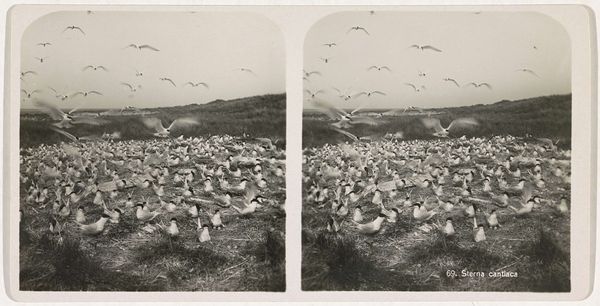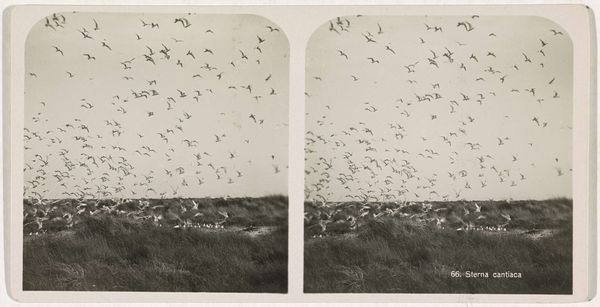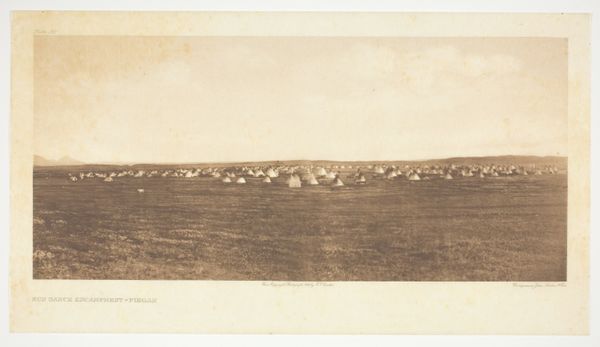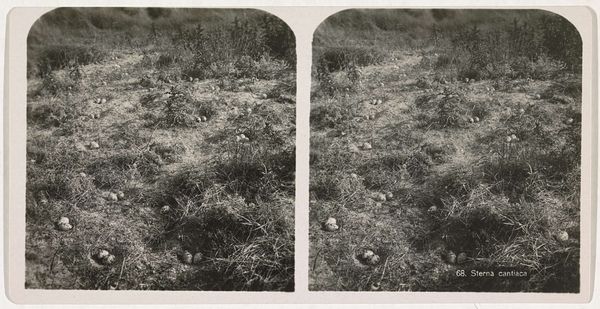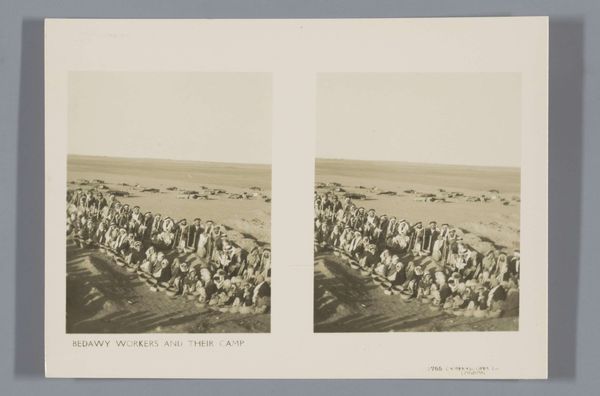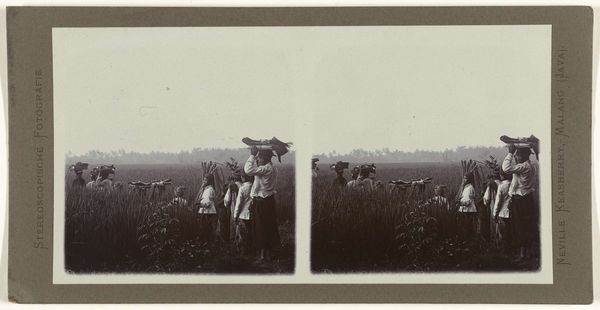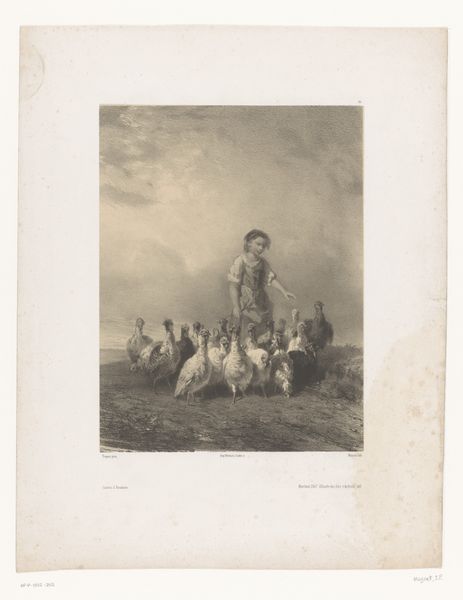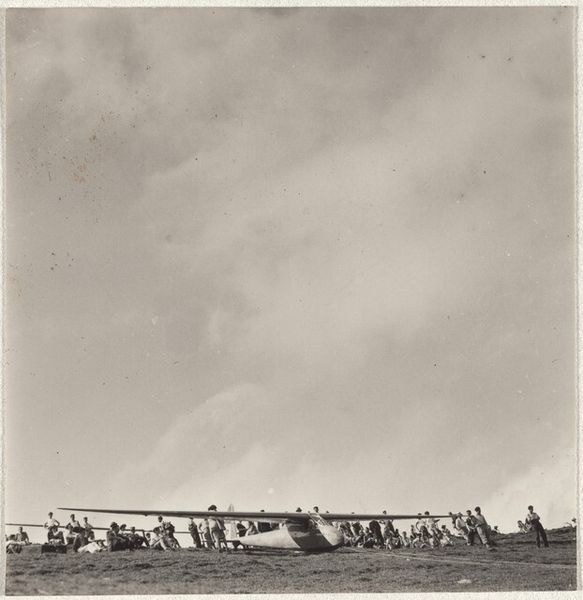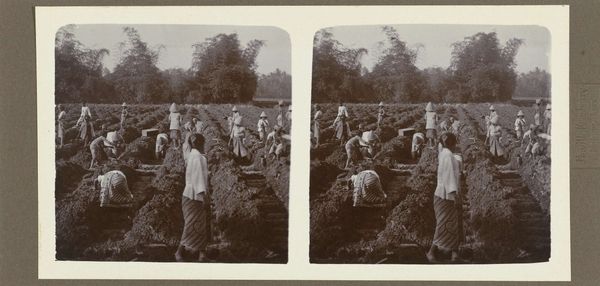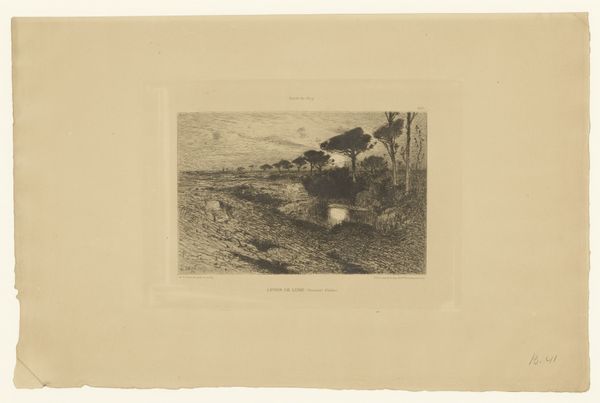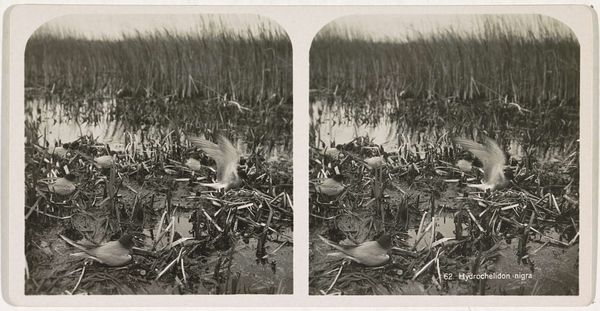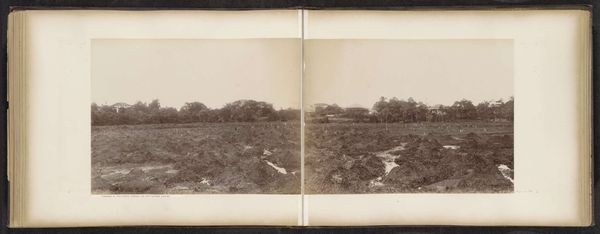
photography, gelatin-silver-print
#
animal
#
landscape
#
photography
#
gelatin-silver-print
#
realism
Dimensions: height 85 mm, width 165 mm
Copyright: Rijks Museum: Open Domain
Curator: What strikes you first about this photograph? It’s entitled "Groep zee-zwaluwen broedend op hun nesten", which translates to "Group of Sea Swallows Nesting on Their Nests." Editor: The sheer number of birds! They almost melt into the landscape, creating a scene that is both tranquil and unsettling. What draws me in most is the photographic rendering itself: I can almost feel the damp air of the nesting grounds captured in gelatin silver. Curator: This gelatin-silver print was created sometime between 1870 and 1940 and now resides in the Rijksmuseum. Given our current climate crisis, I’m immediately drawn to issues around biodiversity, species vulnerability, and environmental destruction that a simple photograph of birds might normally obscure. What narrative emerges when viewing it through such a politicized lens? Editor: Indeed, beyond the biological reality of these nesting birds lies something deeper: birds, throughout human history, have been seen as messengers of the gods, and as symbols of freedom, transcendence, and the soul's journey. Does seeing so many birds clustered together hint at communal unity, an ancient form of matriarchal strength, or a foreshadowing of coming events? Curator: Perhaps this points to the intersection of environmentalism and ecofeminism. This is fertile territory to examine social, historical, and political factors shaping human relations with the natural world—particularly gendered relationships to power and access. Consider too that such imagery has also, at times, historically fueled nativist ideologies that reinforce boundaries based on cultural and ethnic markers. Editor: It’s fascinating how the natural world reflects humanity’s hopes and anxieties. What started as documentation becomes, with context and consideration, something profound about shared culture and historical weight. Curator: Ultimately, considering works of art in conjunction with one another exposes the way complex histories intersect. It encourages more awareness of ourselves and others. Editor: Absolutely, seeing beyond the surface allows a deeper understanding of art as a vessel that carries time and memory.
Comments
No comments
Be the first to comment and join the conversation on the ultimate creative platform.
